2025 trout stocking by the Pennsylvania Fish and Boat Commission has begun
By Steven Brodsky
From a Pennsylvania Fish and Boat Commission news release issued today, February 18, 2025:
Today, the Pennsylvania Fish and Boat Commission (PFBC) began its annual trout stocking operations ahead of the upcoming spring trout season. With help from volunteers, in 2025, the PFBC will stock approximately 3.2 million adult trout in 691 streams and 130 lakes open to public angling. Species being stocked include Rainbow, golden Rainbow, Brown, and Brook Trout. The average trout being stocked is 11 inches long and weighs just over a half-pound. The Statewide Opening Day of Trout Season for 2025 is Saturday, April 5th. A Mentored Youth Trout Day will be held on Saturday, March 29th. To check out the trout stocking schedule or buy your fishing license, visit Fishandboat.com. Individuals or small groups of volunteers (1-4 people) do not need to register to help stock trout, but larger groups should coordinate stocking plans in advance by contacting their regional PFBC law enforcement office to ensure they can be accommodated.
Posted 2-18-25
Approximately 8,400 pheasants are scheduled to be released by the Pennsylvania Game Commission over a two-day period, February 12, 2025 and February 13, 2025
By Steven Brodsky
… as was announced in a news release issued by the Pennsylvania Game Commission on February 6, 2025.
From that news release:
The Pennsylvania Game Commission will be releasing approximately 8,400 pheasants, mostly hens, to provide additional hunting recreation in the last two weeks of pheasant season, which runs through Feb. 28.
“The Game Commission purchases the pheasant chicks raised on our game farms from a private sector supplier,” said Wildlife Operations Division Chief Ian Gregg. “During the 2024 production season, we requested our supplier to raise additional pheasants to be held through the fall and early winter as an ‘insurance policy’ against any disease issues that might arise in the supplier’s primary breeder flocks. Although highly pathogenic avian influenza is known to be present on the Pennsylvania landscape, and it is impossible to completely eliminate the risk of a future disease outbreak that could impact 2025 production, the primary breeder flocks have remained healthy to date and it is not feasible for the ‘backup’ birds to also be held into the upcoming breeding season. Therefore, these surplus pheasants will be released a few weeks before the end of the pheasant season to provide late-winter hunting opportunities.”
Releases are planned to occur during a two-day window next week, on Wednesday, Feb. 12 and Thursday, Feb. 13 at select locations in each of the Game Commission’s six regions. Hunters should be aware, however, that logistical issues could result in last-minute changes to the planned schedule.
The locations expected to receive birds in the February stocking are as follows:
Northwest Region
-
SGL 95 (Butler Co.)
-
SGL 330 (Clarion Co.)
-
Buzzard Swamp area, Allegheny National Forest (Forest Co.)
-
Shenango Lake (Mercer Co.)
Southwest Region
-
SGL 203 (Allegheny Co.)
-
SGL 285 (Beaver Co.)
-
Conemaugh Lake (Indiana Co.)
-
SGLs 117, 232, 245, and 297; Cross Creek Park; Hillman State Park (Washington Co.)
-
Loyalhanna Lake (Westmoreland Co.)
Northcentral Region
-
SGL 333 (Centre Co.)
-
SGL 87 (Clearfield Co.)
-
SGLs 252 and 317 (Union Co.)
Southcentral Region
-
SGL 249 (Adams Co.)
-
SGLs 48 and 97 (Bedford Co.)
-
SGL 169 (Cumberland Co.)
-
SGL 124 (Franklin Co.)
-
SGL 251; Raystown Lake (Huntingdon Co.)
-
SGLs 258, 281, and 290 (Perry Co.)
-
SGLs 188, 194, and 212 (Snyder Co.)
-
SGLs 242 and 243 (York Co.)
Northeast Region
-
SGL 40 and Beltzville area (Carbon Co.)
-
SGLs 58, 226, and 329 (Columbia Co.)
-
SGLs 119 and 187; Butler Enterprises Hunter Access property; Frances Slocum and Nescopeck State Parks (Luzerne Co.)
-
SGLs 84 and 165 (Northumberland Co.)
Southeast Region
-
SGL 280/Blue Marsh (Berks Co.)
The Game Commission’s regular pheasant stocking schedule extends from early October to early January, with over 240,000 pheasants released during that period in 2024-25 and similar numbers planned for 2025-26.
“This year’s February stockings should be considered experimental, and may or may not be repeated in future years depending on 2025 results, annual evaluation of disease risks, and agency budget constraints,” Gregg said.
Posted 2-11-25
Congratulations to the 18 graduates of the 36th Class of the Pennsylvania Game Commission’s Ross Leffler School of Conservation
By Steven Brodsky
… They graduated on February 1, 2025 and they’re now working as Pennsylvania State Game Wardens.
From a news release issued by the Pennsylvania Game Commission on February 5, 2025:
Graduate Kaitlyn Corle received the class award for academics, with a score of 96.08%. Corle was also presented the EVOC driving award for exhibiting safe and exceptional police driving skills during the training program.
Graduate Zachary Killeen was honored with the marksmanship award, achieving the highest overall proficiency in a series of courses firing the handgun, rifle and shotgun. Killeen also was selected as the fitness award winner for maintaining the highest standard of physical fitness during the training program.
Graduate Joshua Douglas earned the academy torch award for maintaining the highest professional standard of conduct, values, ideals, and demonstrated abilities as judged by his fellow classmates.
Graduation of new game wardens follows 44 weeks of intensive training, including 10 weeks of field training.
Training School Director Kyle Jury praised graduates for their dedication and demonstrated commitment to our natural resources.
“These 18 new graduates now embark on their careers as state game wardens by serving in geographical districts across the Commonwealth,” Jury said. “By pursuing this career path, they fulfill an instrumental part of the agency’s continued and dedicated effort to wildlife conservation. Having these individuals join the ranks of game wardens will strengthen the agency’s efforts to safeguard the hunting heritage the Game Commission was founded on so that it can be passed on to future generations.”
In 1930, Ross Leffler, then president of the Pennsylvania Board of Game Commissioners, proposed the establishment of a training school for game protectors, as game wardens then were called. When the training school opened its doors in 1932, in Brockway, Jefferson County, it was the first such conservation officer training school in the world and served as a model for other states.
From 1932 until 1935, the Ross Leffler School of Conservation offered in-service training for game protectors. The school became a permanent facility until 1986, when it was moved to the agency’s Harrisburg headquarters.
Posted 2-7-25
Public access at the Middle Creek Wildlife Management Area will be restricted beginning February 4, 2025, as a result of highly pathogenic avian influenza (HPAI) affecting many areas of Pennsylvania
By Steven Brodsky
The following news release was issued by the Pennsylvania Game Commission today, February 3, 2025:
ACCESS RESTRICTED AT MIDDLE CREEK
Due to highly pathogenic avian influenza (HPAI) that is currently affecting many parts of the state, the Pennsylvania Game Commission is restricting public access at the Middle Creek Wildlife Management Area, effective Tuesday, Feb. 4, 2025.
With the continued warming trends and the anticipated arrival of snow geese to Middle Creek, this decision was made out of an abundance of caution for human and domestic animal health.
Beginning Tuesday, the following areas will be CLOSED to all public access:
-
Willow Point Parking Lot and Trail
-
Archery Range
-
Boat Launch
-
White Oak Picnic Area
-
All shoreline access of the lake, INCLUDING fishing
The Wildlife Drive remains seasonally closed, and an extended closure is possible.
Hiking trails (with the exception of Willow Point Trail and Deer Path Trail) and the Visitor Center will remain open during regular business hours, and all events will take place as scheduled.
All visitors are reminded:
-
If you have pet birds, backyard domestic poultry, or connections with commercial poultry facilities, you are STRONGLY discouraged to visit during this time to minimize transmission risk.
-
You are HIGHLY ADVISED to remain in your vehicles while observing wildlife from roadways.
Please remember the public plays a critical role in wildlife health surveillance. Report sick or dead wild birds to the Game Commission by calling 1-833-PGC-WILD (1-833-742-9453).
Posted 2-3-25
CWD detected in two deer (one wild, one farmed) in Luzerne County, PA in an area that is 40 miles away from where CWD had been detected in wild deer
By Steven Brodsky
… as reported in this just-issued news release from the Pennsylvania Game Commission:
NEWLY DETECTED CWD POSITIVES IN NORTHEAST PA
The Pennsylvania Game Commission, in conjunction with the Pennsylvania Department of Agriculture, is announcing two deer have tested positive for Chronic Wasting Disease (CWD) in a new area of Pennsylvania.
The two deer, one hunter-harvested and one from a captive facility, were detected in Luzerne County. Both deer were adult males.
The Luzerne County detections are 40 miles from the nearest wild CWD detection. They will ultimately result in Disease Management Area (DMA) changes later this spring – the details of which will be released following the Game Commission’s Board of Commissioners meeting in April.
The captive deer that tested positive for CWD Dec. 16 was from a breeding deer farm in Luzerne County. Initial positive test results from the Pennsylvania Animal Diagnostic System Laboratory were confirmed in the USDA’s National Veterinary Services Laboratory in Ames, Iowa on Dec. 23. The Pennsylvania Department of Agriculture placed the farm under a quarantine order for five years. The order requires the farm to test any additional deer that die on the farm, and not transfer any deer on or off the farm. Any subsequent positive test results will extend the quarantine order requirements and restrictions for another five years.
Pennsylvania deer farms must participate in one of two stringent programs – the Herd Certified Program, or the Herd Monitored Program. The Herd Certified Program meets U.S. Department of Agriculture CWD standards and is required for any cervid farmer wishing to ship deer across state lines. Both programs require proper IDs; record-keeping on all animals moved on or off farms; annual herd inventories; reporting of CWD suspect animals and animals that die, escape or are stolen; maintaining a minimum 8-foot-high fence; obtaining permits to import animals from out-of-state; and other measures to monitor herds for disease. Only farms enrolled in the Herd Certified Program are permitted to move live deer across state lines, with official identification that will aid veterinarians in tracking disease origins in the event remaining deer die and test positive.
Chronic Wasting Disease programs in captive deer are managed by the PA Department of Agriculture and are necessary to help slow the spread of the disease and allow these businesses to operate.
An always-fatal neurological disease caused by a misfolded protein called a prion, CWD is a threat to deer and elk. It’s classified as a transmissible spongiform encephalopathy (TSE) and is similar to scrapie in sheep, mad cow disease in cattle and Creutzfeldt-Jakob disease in humans.
CWD spreads through direct animal-to-animal contact, as well as indirectly through prion-contaminated environments. CWD-infected individuals shed prions through saliva, urine and feces, and infected carcasses contribute to environmental contamination. Once in soil, CWD prions remain infectious for decades. Therefore, feeding deer is strongly discouraged and is illegal within existing DMAs.
There is no evidence of CWD infecting humans or other species under natural conditions. However, much is still unknown about CWD, therefore the Centers for Disease Control and Prevention recommends not eating the meat of a CWD-positive deer.
The Game Commission will host an informational meeting to answer any questions from the public. It is scheduled for Thursday, Feb. 27, form 6 p.m. to 8 p.m. at Penn State Hazleton, Graham Building Room 115, Parking Lot F. Penn State Hazleton Campus address is 76 University Drive, Hazleton PA 18202. Contact the Game Commission’s CWD Hotline at 1-833-INFOCWD, email INFOCWD@pa.gov or visit www.arcg.is/1G4TLr for more information.
Posted 1-31-25
An update on Highly Pathogenic Avian Influenza (HPAI) in Pennsylvania was provided by Dr. Andrew DiSalvo, the Pennsylvania Game Commission’s wildlife veterinarian, at the Pennsylvania Board of Game Commissioners meeting that took place on January 24, 2025
By Steven Brodsky
… You’ll find that update in this video:
From a Pennsylvania Game Commission news release that was issued on January 25, 2025:
HPAI UPDATE DETAILED
First detected in Pennsylvania in 2022, Highly Pathogenic Avian Influenza (HPAI) has resurged across Pennsylvania in recent weeks, causing significant bird mortality – particularly in wild geese – that appears on the rise.
At Friday’s meeting, the Game Commission’s Wildlife Veterinarian, Dr. Andrew DiSalvo, provided the agency’s Board of Commissioners with a thorough update about the ongoing situation. The meeting is available on the Game Commission’s YouTube channel, but those wishing to view the presentation can directly access it at this link: https://www.youtube.com/live/RwQpoB0VESE?si=CXVBZvqARRCePD77&t=2435.
HPAI poses risks not only to wildlife, but to domestic animals and humans. People should always view wildlife from a safe distance, avoid wildlife feces and should never handle sick or dead birds.
Those encountering sick or dead wild birds can report them to the Pennsylvania Game Commission, preferably by phone, by calling 1-833-PGC-WILD (1-833-742-9453).
Posted 1-29-25
Some of the best bird photos
By Steven Brodsky
… that birders contributed to the Cornell Lab of Ornithology’s Macaulay Library archive in 2024 are accessible for you to view online.
Enjoy: https://www.allaboutbirds.org/news/macaulay-librarys-best-bird-photos-2024/.
Posted 1-13-25
At the right time and right place
By Steven Brodsky
… a gentle encounter with an element of winter can be serendipitous.
On the first evening of winter 2025, this poem by Robert Frost reminds us of this: Dust of Snow by Robert Frost | Poetry Foundation.
Similar (and surprising) beneficial encounters await many of us this season.
Enjoy winter 2025!
Posted 1-1-25
Attention boaters: the Pennsylvania Fish and Boat Commission (PFBC) has announced the availability of a new online boating safety education course
By Steven Brodsky
… Details about this course were revealed in a press release that was issued by the Pennsylvania Fish and Boat Commission (PFBC).
From that press release:
HARRISBURG, Pa. (December 5) – The Pennsylvania Fish and Boat Commission (PFBC) is excited to announce the availability of a new, low-cost online boating safety education course!
The course, offered in partnership with the nonprofit BoatUS Foundation for Boating Safety and Clean Water, is available for only $17, is approved by both the PFBC and National Association of State Boating Law Administrators (NASBLA), and recognized by the United States Coast Guard.
In Pennsylvania, a Boating Safety Education Certificate is required for any person born on or after January 1, 1982, to operate boats powered with motors greater than 25 horsepower or any personal watercraft. To receive a certificate, boaters must successfully complete an approved boating safety course – either online or through in-person instruction.
The BoatUS Foundation course consists of six lessons and quizzes along with a final exam. Students may use a computer or mobile device to start, pause, and resume their learning at any time, and the full course can be completed in approximately four-to-eight hours. Individuals who successfully complete the online course will immediately receive a temporary Boater Safety Education Certificate which can be printed and is valid for 60 days. Within four-to-six weeks, students will receive their permanent certificate in the mail in the form of a durable plastic card that is valid for the boater’s lifetime.
“Not only does this boating safety course come at a great value and convenience, but it’s also proven that this type of education saves lives,” said Paul Littman, Director of the PFBC’s Bureau of Boating. “Approximately 75% of boating fatalities occur on boats where the operator did not have any formal boating safety education. There’s never been a better time to earn your certificate than right now thanks to this partnership.”
To access the course, visit the PFBC website (FishandBoat.com), and the select the BoatUS Foundation option.
Posted 12-8-24
It wasn’t you, nor was it me
By Steven Brodsky
… who made this tree:
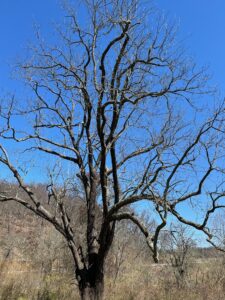
Photo by Steven Brodsky
“Trees,” by Joyce Kilmer: https://www.poetryfoundation.org/poetrymagazine/poems/12744/trees
The tree was photographed yesterday.
The Joyce Kilmer poem was published in August 1915.
This post originally appeared at: Conversations About Faith – delcoculturevultures.com.
Posted 3-25-24, Reposted and Revised 11-21-24
In a proper season
By Steven Brodsky
… appeared this frog (and the shadow it cast upon a lotus leaf):
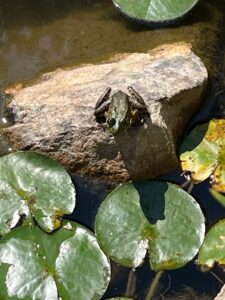
Photo by Steven Brodsky
Ecclesiastes 3 KJV (biblehub.com)
This post appeared in the Conversations About Faith section of this column.
Posted 4-25-24, Reposted and Revised 8-14-24
Exquisite is the monarch butterfly chrysalis stage
By Steven Brodsky
… as pictured here:
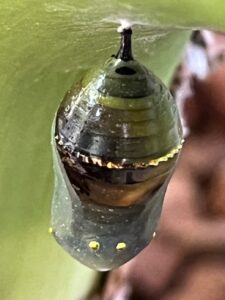
Photo by Steven Brodsky
I can’t say that I find the adult stage of the monarch butterfly to be more exquisite than the monarch chrysalis stage.
Which stage is more exquisite?
Not an easy question (for me) to answer.
It’s easier to simply enjoy seeing these two life stages of the monarch butterfly in the great outdoors!
Posted 8-7-24
Coming into the peace of some wild things
By Steven Brodsky
… with this photo and “The Peace of Wild Things”:
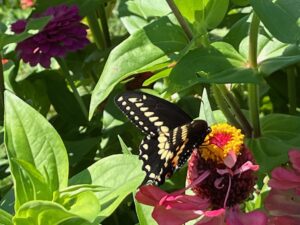
Photo by Steven Brodsky
Posted 7-9-24
‘Nature rarer uses yellow’
By Steven Brodsky
… wrote Emily Dickinson: https://www.online-literature.com/dickinson/poems-series-2/106/.
Thought of the poem today when this early spring spattering of translucent yellow came into view trailside in a National Park:
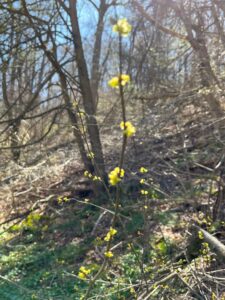
Photo by Steven Brodsky
Some of this column’s readers will recall the Emily Dickinson poem the next time that they take notice of nature’s yellow in the great outdoors.
Posted 3-24-24
A tarantula species was named after Johnny Cash 8 years ago, on February 5, 2016
By Steven Brodsky
… The species is found near Folsom State Prison, the venue where Johnny Cash’s first live album, Johnny Cash at Folsom Prison, was recorded on January 13, 1968. The album was released on May 6, 1968.
Folsom State Prison is located in Folsom, California.
The tarantula species is named Aphonopelma johnnycashi: http://www.sci-news.com/biology/aphonopelma-johnnycashi-new-tarantula-species-johnny-cash-03615.html.
Posted 2-5-24
Most people can relate
By Steven Brodsky
… to the kind of death that was experienced by the character in Seamus Heaney’s poem “Death of a Naturalist.”
Posted 7-12-22
A Conversation With Katie Fallon, Author of ‘Vulture: The Private Life of an Unloved Bird’
By Steven Brodsky
Katie Fallon is a co-founder of the Avian Conservation Center of Appalachia. She’s worked with many species of raptors and other kinds of birds. Katie’s books include Cerulean Blues (2011) and the recently released Vulture: The Private Life of an Unloved Bird. Her essays have appeared in a number of literary journals. She has a lifelong love of nature. I’ve heard that the first word she ever spoke was “bird.”
Your new book gives vultures, particularly turkey vultures, the positive attention these non-predator raptors deserve. What brought about your interest in these maligned birds?
I’ve been fascinated by vultures for at least fifteen years. There was a roost near where I lived in West Virginia; every day I’d drive by this big, old dead tree with ten or so turkey vultures hunched in it. They became a familiar sight, and I looked forward to seeing them. Vultures are big and kind of dramatic, and in flight, there’s nothing more beautiful. In addition, they’re the ultimate recyclers—they turn death into life.
Many people in the U.S. have an aversion to vultures. Speak about this.
I think vultures remind people of their own mortality. It can be a little creepy to think about a large, dark bird waiting to consume your body when you die. In general, I don’t think people in the US are comfortable with thinking of our bodies as food. Vultures remind us that life will continue after we die, and that some life will continue because we die. They remind us of our animal bodies. Which can be unnerving!
In the absence of vultures, we’d have major health issues to contend with. Tell us why.
Vultures clean up our ecosystems by removing animal carcasses that could potentially contaminate soil and water. They can eat animals that have died of anthrax and botulism. In the absence of vultures, mammalian scavengers could increase in number, and many mammalian scavengers such as raccoons, skunks, feral dogs and cats can spread rabies; vultures do not. Several vulture species in India have suffered catastrophic population crashes in the last twenty years, and public health has suffered. India leads the world in human rabies cases, and the number of cases has increased as the number of feral dogs increased in the absence of vultures.
People get close to vultures by attending your presentations that feature non-releasable birds. How are these birds acquired? How are they trained?
The nonprofit I co-founded, the Avian Conservation Center of Appalachia, keeps eight non-releasable raptors for educational purposes (you need permits from the US Fish & Wildlife Service to do this, of course – the birds aren’t pets or personal property). All of our birds were injured wild birds that cannot return to the wild. We have three vultures. Lew the turkey vulture was hit by a car and suffered an injury to his shoulder that prevents flight. His “girlfriend,” Boris, was shot in the wing, and by the time she reached us the bone had already healed incorrectly. Our black vulture is Maverick, and he was hit by a car, which resulted in a shoulder injury that prevents adequate flight.
Our birds are all trained using positive reinforcement. We avoid negative reinforcement and punishment, and we try to empower the birds to have some control over their environments. We condition behaviors by offering food rewards when the birds perform the behaviors. Vultures (especially our black vulture!) learn quickly, and they are a lot of fun to work with.
What myths and misunderstandings about vultures do these presentations help to dispel?
People are surprised at how clean and charismatic the vultures are – and how beautiful they are up close, despite their featherless heads.
What vulture behaviors do people find to be most interesting?
People often ask if vultures throw up on us; our education vultures usually don’t (unless they get scared). Vultures also expel liquid waste on their legs and feet, probably to clean them as well as to keep cool. This often fascinates people as well.
Which species of vulture are found in Pennsylvania and neighboring states?
We have turkey vultures and black vultures. During the last Ice Age we may have had California condors, too, and possibly some other now-extinct vultures.
What has been learned about migration of these species?
Hawk Mountain has taken the lead on turkey vulture migration research. Dr. Keith Bildstein and his team have placed transmitters and wing tags on turkey vultures all over the Americas. They’ve learned that our eastern turkey vultures are partial migrants—some spend the winters in Florida, some on the New Jersey shore, some in Virginia, and in many places in between. Many western turkey vultures are complete migrants, leaving their breeding ranges in Canada and heading all the way to South America. And still others in the American southwest migrate into Central America and return. It’s fascinating how the different subspecies have different migratory strategies. Dr. Bildstein and his colleagues have ongoing research projects about turkey vulture migration, and are discovering more all the time.
Vultures have spectacular flying ability. What makes this possible?
Turkey vultures are very light – they have almost the same wingspan as a bald eagle but weigh less than half what an eagle weighs. Their wings are long and broad, and are made for soaring.
How high can they fly?
The Ruppell’s vulture holds the record for the highest-flying bird. Unfortunately for that individual, it was hit and killed by a jet flying over Africa at 37,000 feet.
Vulture: The Private Life of an Unloved Bird informs readers about lead toxicity in vultures. What is the extent of the problem? How do vultures ingest lead?
Vultures (and eagles, hawks, crows, ravens, and owls) can ingest small pieces of spent lead ammunition in animal carcasses or “gut piles” left by hunters. When someone shoots a white-tailed deer, for example, the deer is usually field-dressed, and many of the organs are left. This can be a delight for vultures and other scavengers! In ecosystems, scavengers often follow the big predators to clean up the leftovers; here, the same thing is happening—a human is the big predator, a gut pile is the leftover, and a vulture or eagle is the scavenger. However, if small lead fragments are still in the gut piles, avian scavengers can inadvertently ingest the lead and become sick. Lead toxicity from spent ammunition is the biggest obstacle in the way of California condor recovery.
The Avian Conservation Center of Appalachia provides rehabilitation for injured birds. What kind of care do vultures receive?
We’ve treated vultures with a wide variety of injuries and ailments—broken bones, head trauma, lead toxicity, soft tissue injuries. Every bird we admit receives an immediate comprehensive examination by an avian veterinarian, and is then treated as necessary with antibiotics, antifungals, anti-inflammatories, fluid therapy, or chelation therapy. They also receive orthopedic surgery if necessary. We do our best to get the birds back out in the wild if possible.
It must be very joyful to enable an injured bird to regain flight ability. Please tell us about a memorable release.
Two and a half years ago we released a female turkey vulture that had been shot with a shotgun—she had three pellets embedded in soft tissue. We had to leave the pellets in her body because removing them would cause damage. Once she was nursed back to health, we released her wearing a transmitter to track her movements. We learned that she travels to northern Georgia in the winters and comes back to West Virginia in the breeding season. We are thrilled that this vulture was able to return to the wild—and thrive!
Vulture watching is growing in popularity. Turkey vultures are very widespread. Where are some of the best places and times to observe them?
In many parts of the southeastern United States, you can see turkey vultures any day of the year in a variety of habitats. In the winter, vultures can be observed roosting together in and near many cities: in Virginia, check out Leesburg, Staunton, Radford, Pulaski, and Charlottesville; in West Virginia, many vultures can be observed migrating in the fall over Hanging Rock Tower in Monroe County and over Harper’s Ferry in the eastern panhandle. During the summer and fall, the overlook at Cooper’s Rock State Forest near Morgantown, WV, is a sure place to see turkey vultures. Hawk Mountain in Pennsylvania, of course, is an excellent place to watch turkey vultures and birds of prey during migration, especially in September and October.
What stimulated your interest in nature?
I’ve always been an outdoors person. I grew up in northeastern Pennsylvania, and I had horses as a kid. I spent a great deal of time with my horses, trail riding and competing, and when I got a bit older I often went hiking and camping with friends and family. One of my favorite childhood hiking spots was Ricketts Glen State Park—it’s filled with hemlock trees and many gorgeous waterfalls. It’s definitely worth checking out if you visit northeastern PA.
Was “bird” your first word?
Yes! My parents had bird feeders in their yard when I was a baby (well, they still do) and my mother says she used to hold me in front of the window to show me the birds at the feeder. One day, she said, “Look at the birds! Look at the birds outside.” And I nodded and said, “Bird.” I haven’t stopped talking about them since.
Katie Fallon’s website address is: www.katiefallon.com.
Posted 4-6-17, Reposted 10-29-19